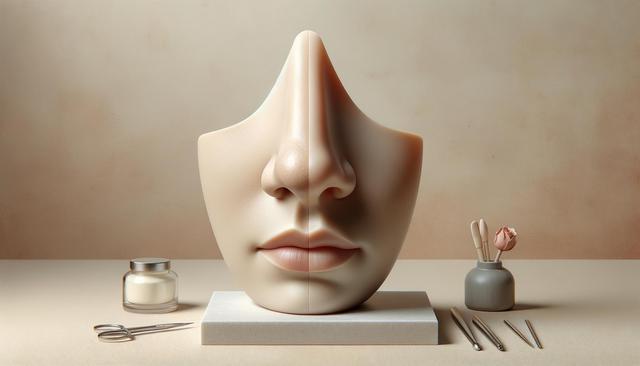
Rhinoplasty Guide: Enhance Your Facial Symmetry with Expert Care
Understanding the Purpose of Rhinoplasty
Rhinoplasty, commonly referred to as nose reshaping surgery, serves both aesthetic and functional purposes. While many individuals seek rhinoplasty to enhance their facial symmetry and refine the contours of their nose, others pursue the procedure to correct breathing difficulties caused by structural abnormalities. Whether the goal is cosmetic improvement or functional correction, rhinoplasty is a carefully planned procedure that requires expert evaluation and surgical skill. The initial consultation is a critical step where the surgeon assesses facial features, discusses the patient’s goals, and identifies any underlying issues such as a deviated septum or nasal trauma. This individualized approach ensures that the surgical plan aligns with both the visual goals and medical needs of the patient.
The Role of Facial Harmony in Rhinoplasty
One of the core objectives of rhinoplasty is to improve overall facial harmony. The nose occupies a central position on the face, making its shape and size influential in the perception of balance among other facial features. Skilled surgeons aim to make subtle changes that have a significant visual impact, ensuring the nose complements the chin, eyes, and cheekbones. This doesn’t mean aiming for a perfect or ideal nose, but rather one that fits naturally within the individual’s unique facial structure. Common aesthetic adjustments include:
- Reducing or reshaping a dorsal hump
- Narrowing the nasal bridge or tip
- Adjusting nostril size or symmetry
- Refining the angle between the upper lip and nose
By focusing on proportion rather than perfection, rhinoplasty can enhance natural beauty and create a more balanced facial appearance.
Breathing Benefits Beyond Aesthetics
In addition to enhancing appearance, rhinoplasty often provides relief from breathing issues. Structural problems such as a deviated septum, enlarged turbinates, or collapsed nasal valves can restrict airflow and lead to chronic congestion, difficulty sleeping, or reduced exercise tolerance. Functional rhinoplasty, sometimes combined with septoplasty, directly addresses these issues. Patients who undergo this type of surgery typically report significant improvements in airflow and overall nasal function. Benefits of functional rhinoplasty may include:
- Improved nighttime breathing and sleep quality
- Reduced nasal obstruction and sinus discomfort
- Enhanced ability to engage in physical activities
- Relief from chronic mouth breathing
These functional improvements often complement the aesthetic results, contributing to a comprehensive sense of well-being and comfort.
What to Expect During the Process
The rhinoplasty journey begins with a detailed consultation, followed by pre-operative planning, surgery, and recovery. During the consultation, the surgeon may use digital imaging to simulate potential outcomes, helping patients visualize results and set realistic expectations. On the day of the procedure, the surgery is typically performed under general anesthesia and can last between one to three hours, depending on complexity. Post-surgery, patients can expect some swelling, bruising, and nasal congestion, which gradually subside over the following weeks. Full results usually become apparent within 6 to 12 months as tissues settle and heal. Important aspects of the recovery process include:
- Following post-operative care guidelines to minimize complications
- Attending regular follow-up appointments
- Avoiding strenuous activities during the initial healing period
- Being patient with the healing timeline
Clear communication and adherence to recovery protocols significantly influence the final outcome and overall satisfaction.
Choosing the Right Surgeon for Optimal Results
Successful rhinoplasty outcomes rely heavily on the expertise and experience of the surgeon. Prospective patients should look for board-certified professionals who specialize in facial plastic surgery and have a strong portfolio of rhinoplasty procedures. A reputable surgeon will prioritize patient safety, provide a transparent overview of risks and benefits, and offer personalized guidance throughout the process. During consultations, it’s helpful to ask questions such as:
- What is your experience with cases similar to mine?
- What techniques will you use to achieve my goals?
- How do you handle revisions, if necessary?
- What can I realistically expect from the procedure?
Establishing trust and clarity with your surgical team is essential for a smooth experience and outcome that aligns with your expectations.
Conclusion: A Personalized Path to Confidence and Comfort
Rhinoplasty is more than a cosmetic procedure—it is a personalized journey that can significantly enhance both appearance and function. Whether you’re looking to bring more harmony to your facial features or seeking relief from breathing difficulties, this procedure offers a thoughtful solution tailored to your needs. By working with a qualified professional and taking the time to understand your options, you can approach rhinoplasty with confidence and clarity, knowing it can contribute to both your physical comfort and personal confidence in meaningful ways.